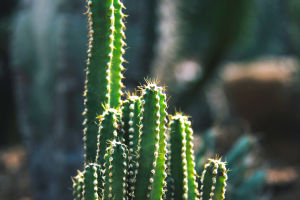The Impala is the most common antelope we see in Africa.
They are found in the bush forests of South Africa and the savannas of East Africa, and there are over 2 million impalas scattered throughout Africa.
These slender, nimble antelopes may be noticeable at first, but because there are so many of them.
It doesn't take long for people to become aesthetically tired.
Many of Africa's phytophagous animals are divided into herbivores and scrub feeders.
Some of them are mainly grass eaters, some are mainly shrub eaters, and some of them even specialize in eating high grasses and some specialize in eating low grasses, so the division can be fine.
The Impala, on the other hand, is not a picky eater at all and eats whatever is available.
It is known as a "hybrid feeder", and this gives it a wider range of adaptability than other antelopes, as the abundance and nutrition of shrubs and grasses, change during the dry and rainy seasons.
Impala is very fond of clusters, and the large number of eyes and ears provides them with the greatest sense of security when they are "numerous".
Females are largely found in groups, and males form bachelor clubs as soon as they grow up and leave their original group.
Sometimes they mingle with baboons, not only to feed on food dropped from trees but also to take advantage of the baboons' elevated position for vigilance.
When a predator is encountered, the impala group will be like an explosion, and everyone will scatter and flee in different directions.
If the predator is inexperienced, it is easy to be confused in the face of this situation, not knowing which one to chase.
What should we do when we are separated?
The black hair on the antelope's slender feet contains a gland that can leave a scent message on the plants they pass.
So that the scattered group can slowly find their way back together after following the scent.
Secondly, there is an ecological "dilution effect", which means that if a predator attacks a very weak antelope.
The probability of being eaten is 100 If a predator attacks a weak antelope, the probability of the antelope being eaten is 100 %, then when the antelope joins a herd of 100 similar antelopes.
The probability of being eaten becomes 1 %, not to mention that it can increase its chances of survival by hiding on the other side of the herd, or by using more resistant antelopes to cover itself.
The impala is also a master leaper, and when frightened it can jump as high as 3 meters and as far as 9 meters with graceful posture.
The black-spotted antelope is characterized by a vertical black stripe on each leg, a black tail, a "Szechuan" rump, and a family of black hairs on the hind hooves.
When the impala runs, it kicks its hind legs upwards, allowing the scent produced by this gland to be fully dispersed, creating a scent band in the air.
All impala can learn the route of other antelopes from this scent band, which can avoid collision between antelopes to the greatest extent possible, and also help to find the group after the alarm is lifted.


